vol. 25, No. 4, 2014, p. 611-795
The Brazilian Federal Police illicit drug chemical profiling program (PeQui project) was designed to provide useful forensic chemistry results and police intelligence information. Cocaine samples seized in eight Brazilian states were analyzed by quantitative gas chromatography-flame ionization detector (GC-FID) and data were interpreted regarding detailed organic chemical composition. Details are presented in the Editorial Chemical Profiling of Cocaine Seized by Brazilian Federal Police in 2009-2012: Major Components by Élvio D. Botelho, Ricardo B. Cunha, Alex Fabiano C. Campos and Adriano O. Maldaner on page 611.
Chemical Profiling of Cocaine Seized by Brazilian Federal Police in 2009-2012: Major Components
Élvio D. Botelho; Ricardo B. Cunha; Alex Fabiano C. Campos; Adriano O. Maldaner
How to cite this article
The Brazilian Federal Police illicit drug chemical profiling program (PeQui project) was designed to provide useful forensic chemistry results and police intelligence information. Cocaine samples seized in eight Brazilian states were analyzed by quantitative gas chromatography-flame ionization detector (GC-FID) and data were interpreted regarding detailed organic chemical composition. Details are presented in the Editorial Chemical Profiling of Cocaine Seized by Brazilian Federal Police in 2009-2012: Major Components by Élvio D. Botelho, Ricardo B. Cunha, Alex Fabiano C. Campos and Adriano O. Maldaner on page 611.
https://dx.doi.org/10.5935/0103-5053.20140008
Articles J. Braz. Chem. Soc. 2014, 25(4), 611-618
Chemical Profiling of Cocaine Seized by Brazilian Federal Police in 2009-2012: Major Components
Élvio D. Botelho; Ricardo B. Cunha; Alex Fabiano C. Campos; Adriano O. Maldaner
How to cite this article
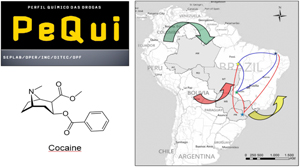
Cocaine samples seized in several Brazilian states between 2009 and 2012 were analyzed by the Federal Police chemical profiling program (PeQui project). Cocaine purity, degree of oxidation and pharmaceutical products used as cutting agents were determined by gas chromatography-flame ionization detector (GC-FID) analysis.
https://dx.doi.org/10.5935/0103-5053.20140008
J. Braz. Chem. Soc. 2014, 25(4), 619-628
A Novel Computational Approach for Development of Highly Selective Fenitrothion Imprinted Polymer: Theoretical Predictions and Experimental Validations
Leonardo Augusto de Barros; Leandro Alves Pereira; Rogério Custódio; Susanne Rath
How to cite this article
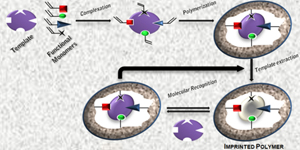
Molecular imprinting is a technique that creates recognition sites specific for a target molecule within a synthetic polymer. The so-called molecular imprinting polymers are rigid polymeric materials that present high molecular recognition properties for a target molecule called template. After polymerization, the template is extracted from the polymer network, leaving its imprinting in the polymer structure.
https://dx.doi.org/10.5935/0103-5053.20140009
J. Braz. Chem. Soc. 2014, 25(4), 629-638
Experimental and NMR Theoretical Methodology Applied to Geometric Analysis of the Bioactive Clerodane trans-Dehydrocrotonin
Breno Almeida Soares; Caio Lima Firme; Maria Aparecida Medeiros Maciel; Carlos R. Kaiser; Eduardo Schilling; Adailton J. Bortoluzzi
How to cite this article

X-ray diffraction, nuclear magnetic resonance analysis and theoretical methodology were applied to the bioactive clerodane t-DCTN resulting in good correlations between experimental (obtained in a 600 MHz equipment) and theoretical magnetic properties (from B3LYP/6-311G++(d,p)).
https://dx.doi.org/10.5935/0103-5053.20140010
J. Braz. Chem. Soc. 2014, 25(4), 639-647
Amburanins A and B from Amburana cearensis: Daphnodorin-Type Biflavonoids that Modulate Human Neutrophil Degranulation
Kirley M. Canuto; Luzia K. A. M. Leal; Amanda A. Lopes; Christina M. Coleman; Daneel Ferreira; Edilberto R. Silveira
How to cite this article

Two new biflavonoids, amburanins (1) A and B (2), isolated from the trunk bark of Amburana cearensis, inhibited human neutrophil degranulation and myeloperoxidase activity, demonstrating a potential anti-inflammatory effect.
https://dx.doi.org/10.5935/0103-5053.20140011
J. Braz. Chem. Soc. 2014, 25(4), 648-657
Adsorption of 1-(2-Thiazolylazo)-2-Naphthol on Amberlite XAD-7 and Silica Gel: Isotherms and Kinetic Studies
Grazielle C. Anaia; Patricia A. M. Freitas; Maria E. V. Suárez-Iha; Fábio R. P. Rocha
How to cite this article

Kinetic and thermodynamic studies of the adsorption of 1-(2 thiazolylazo)-2-naphtol on XAD-7 or silica gel aiming the selection of the best adsorbent for solid-phase extraction.
https://dx.doi.org/10.5935/0103-5053.20140012
J. Braz. Chem. Soc. 2014, 25(4), 658-664
Ligand-less Rapidly Synergistic Cloud Point Extraction as an Efficient Method for the Separation and Preconcentration of Trace Amounts of Lead from Food and Water Samples
Reyhaneh Rahnama; Sorour Eram; Mohammad Reza Jamali
How to cite this article
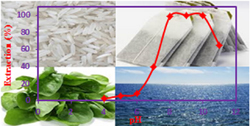
A simple rapidly synergistic cloud point extraction procedure has been developed for the separation and preconcentration of trace amounts of lead from food and water samples by flame atomic absorption spectrometry (FAAS).
https://dx.doi.org/10.5935/0103-5053.20140013
J. Braz. Chem. Soc. 2014, 25(4), 665-674
Use of Chemometric Tools to Determine the Source of Metals in Sediments of the Rivers of the Turvo/Grande Hydrographical Basin, Sao Paulo State, Brazil
Mariele B. Campanha; Joao Paulo Romera; Jéssica Coelho; Edenir R. Pereira-Filho; Altair B. Moreira; Márcia C. Bisinoti
How to cite this article
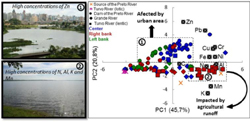
It was assessed the concentrations of metals (Al, Cr, Cu, K, Mn, Ni, Pb e Zn) in superficial and core sediments from 5 sampling sites along the Turvo/Grande hydrographic basin. Principal Component Analysis (PCA) and Pearson's correlation matrix were performed to evaluate the source of metals. Zn has anthropic contribution in sites from the urban area, while Al, Mn, K and N at the site in rural area are from agricultural runoff.
https://dx.doi.org/10.5935/0103-5053.20140014
J. Braz. Chem. Soc. 2014, 25(4), 675-685
Study of Fatty Acids Profile in Biological Sample by Capillary Zone Electrophoresis Associate to Chemometric Approach
Patrícia M. C. Barra; Patrícia L. Oliveira; Danielle M. O. Aragao; Céphora M. Sabarense; Beatriz J. V. Aarestrup; Mônia S. Azevedo; Ana Carolina O. Costa; Gustavo A. Micke; Marcone A. L. Oliveira
How to cite this article
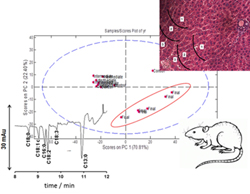
The determination of fatty acids (FA) in liver from three different groups of Wistar rats submitted to different diets (AIN93G) by capillary zone electrophoresis (CZE) signals as an interesting alternative to biologic analysis when chemometrics is associated to histopathologic analysis.
https://dx.doi.org/10.5935/0103-5053.20140015
J. Braz. Chem. Soc. 2014, 25(4), 686-696
Migration of Residual Nonvolatile and Inorganic Compounds from Recycled Post-Consumer PET and HDPE
Camila Dutra; Maria Teresa de A. Freire; Cristina Nerín; Karim Bentayeb; Angel Rodriguez-Lafuente; Margarita Aznar; Felix G. R. Reyes
How to cite this article

The opportunity of converting post-consumer plastic materials into food contact packaging requires the development of reliable analytical methods to determine the potential migration of residual contaminants, in order to ensure the package safety for its intended use. In this study post-consumer PET and HDPE, submitted to several cleaning process, were evaluated to migration tests for determination of nonvolatile and inorganic elements.
https://dx.doi.org/10.5935/0103-5053.20140016
J. Braz. Chem. Soc. 2014, 25(4), 697-703
HPLC-FLD Method for Itraconazole Quantification in Poly Lactic-co-glycolic Acid Nanoparticles, Plasma and Tissue
Karen R. Py-Daniel; Osmindo R. Pires Junior; Carlos M. Infante C.; Maria L. Fascineli; Antonio C. Tedesco; Ricardo B. Azevedo
How to cite this article
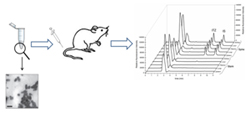
This study developed an analytical method for high performance liquid chromatography (HPLC) with fluorometric detection for quantification of itraconazole in poly lactic-co-glycolic acid nanoparticles, plasma and tissue, which is sensitive, low cost, viable for routine usage and with potential for application in itraconazole biodistribution and pharmacokinetics studies.
https://dx.doi.org/10.5935/0103-5053.20140022
J. Braz. Chem. Soc. 2014, 25(4), 704-708
A New Flavonoid Derivative from Leaves of Oxandra sessiliflora R. E. Fries
Elcilene A. de Sousa; Armenio A. C. A. da Silva; Alberto J. Cavalheiro; Joao Henrique G. Lago; Mariana H. Chaves
How to cite this article

One new flavonoid, quercetin-3-O-α-L-rhamnopyranosil-(1→4)-β-D-glucopyranoside, together with kaempferol-3-O-α-L-rhamnopyranosyl-(1→4)-β-D-glucopyranoside, rutin, and kaempferol-3-O-rutinoside were isolated from the leaves of Oxandra sessiliflora R. E. Fries (Annonaceae). The structure of the compound was elucidated by spectroscopic methods, including extensive 1D and 2D-nuclear magnetic resonance (NMR) techniques.
https://dx.doi.org/10.5935/0103-5053.20140023
J. Braz. Chem. Soc. 2014, 25(4), 709-715
A Nanoparticle-Based Solid-Phase Extraction Procedure Followed by Spectrofluorimetry to Determine Carbaryl in Different Water Samples
Ahad Bavili Tabrizi; Mohammad Reza Rashidi; Hadi Ostadi
How to cite this article
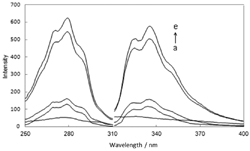
A new method based on combination of NP based SPE with spectrofluorimetric detection has been developed for the extraction and determination of trace amounts of carbaryl in environmental water samples.
https://dx.doi.org/10.5935/0103-5053.20140024
J. Braz. Chem. Soc. 2014, 25(4), 716-725
Porous Ceramic Materials From Polysiloxane-Clay Composites
Mariana G. Segatelli; Manuela L. Q. A. Kaneko; Viviane P. Silva; Inez V. P. Yoshida
How to cite this article
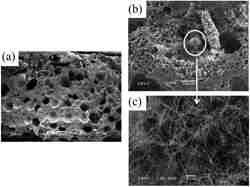
Ni- and C-rich islands associated to presence of pores on polymer-derived ceramics contributed to the formation of ultra-long nanowires at high temperature.
https://dx.doi.org/10.5935/0103-5053.20140025
J. Braz. Chem. Soc. 2014, 25(4), 726-733
Photoelectroactivity of Bismuth Vanadate Prepared by Combustion Synthesis: Effect of Different Fuels and Surfactants
Renata Afonso; Jéssica A. Serafim; Adriana C. Lucilha; Marcelo R. Silva; Luiz F. Lepre; Rômulo A. Ando; Luiz H. Dall'Antonia
How to cite this article
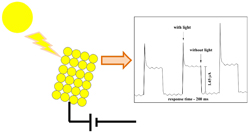
BiVO4 photoelectrodes when irradiated with light promote an augmentation in photocurrent.
https://dx.doi.org/10.5935/0103-5053.20140026
J. Braz. Chem. Soc. 2014, 25(4), 734-742
Combination of Directly Suspended Droplet Microextraction and Flame Atomic Absorption Spectrometry for Determination of Trace Amounts of Iron and Copper
Shahed Hassanpoor; Gholamreza Khayatian
How to cite this article
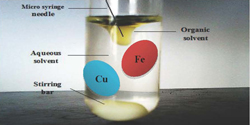
Directly suspended droplet microextraction (DSDME) combined with flame atomic absorption spectrophotometry (FAAS) was developed for the first time for determination of Cu (II) and Fe (III) in different samples. DSDME provides more flexibility and simplicity in the choice of the operational extraction parameters and does not need any special glass tube for extraction and solvent collection.
https://dx.doi.org/10.5935/0103-5053.20140027
J. Braz. Chem. Soc. 2014, 25(4), 743-749
High Pressure Asher (HPA-S) Decomposition of Biodiesel Samples for Elemental Analysis by Inductively Coupled Plasma Optical Emission Spectrometry (ICP OES)
Ana Paula Packer; Jorge Eduardo S. Sarkis; Maria Fernanda Giné; Éder José dos Santos
How to cite this article
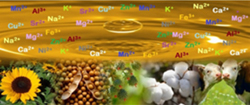
The presence of some inorganic elements in biodiesel has a direct influence on the engine performance and fuel behavior. In this context, the quantification of several elements becomes necessary to evaluate fuel quality and to control the pollutant emission. A decomposition procedure for oil based samples using a high pressure asher was evaluated.
https://dx.doi.org/10.5935/0103-5053.20140028
J. Braz. Chem. Soc. 2014, 25(4), 750-758
Effects of Impregnation Methods and Drying Conditions on Quinoline Hydrodenitrogenation over Ni-W Based Catalysts
Fang Guo; Shaoqing Guo; Zegang Qiu; Liangfu Zhao; Hongwei Xiang
How to cite this article
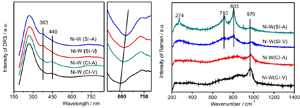
The effects of impregnation methods and drying conditions on the structure and catalytic behavior of MCM-41-supported Ni-W catalysts were investigated. Co-impregnation and drying under vacuum favoured the formation of octahedrally coordinated W species that could be easily sulfided and involved in the genesis of active sites with high HDN catalytic performances.
https://dx.doi.org/10.5935/0103-5053.20140035
J. Braz. Chem. Soc. 2014, 25(4), 759-769
Study of Biodiesel Photodegradation Through Reactions Catalyzed by Fenton's Reagent
Elizangela Ambrosio; Lorena M. Milano; Maísa Tatiane F. de Souza; Lucas U. R. Chiavelli; Paula F. Montanher; Jesuí V. Visentainer; Vitor de C. Almeida; Nilson E. Souza; Juliana C. Garcia
How to cite this article
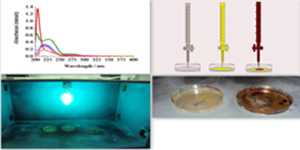
Biodiesel was degraded in contact with water. Fenton's reagent and UV-Vis light was used to speed up the process.
https://dx.doi.org/10.5935/0103-5053.20140036
J. Braz. Chem. Soc. 2014, 25(4), 770-776
Rapid and Variable-Volume Sampling Loading in Nonaqueous Microchip Electrophoresis
Zhenhua Li; Yuanming Guo; Yongdong Zhou; Xiaoning Zhang; Hongmei Hu
How to cite this article

A rapid and variable-volume sample loading scheme for nonaqueous microchip electrophoresis with laser induced fluorescence detection (NAMCE-LIF) has been developed, which includes a porous polymer plug, a microvacuum pump, and a single potential supply.
https://dx.doi.org/10.5935/0103-5053.20140038
J. Braz. Chem. Soc. 2014, 25(4), 777-782
Facile Chemiluminescence Assay for Acyl-CoA Oxidase Activity: Fundamentals and Illustrative Examples
Min Yao; Xiangdong Xu; Yang Liu; Lingling Jiang
How to cite this article
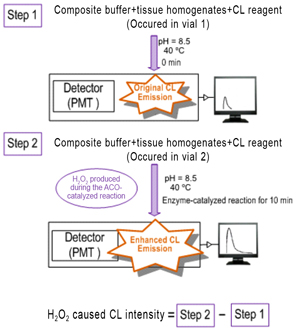
We have developed a novel "two-step" chemiluminescent method for the quantitation of acyl-CoA oxidase activity based on the chemiluminescent reaction between the H2O2 produced during the acyl-CoA oxidase-catalyzed reaction and luminol.
https://dx.doi.org/10.5935/0103-5053.20140039
Short Report J. Braz. Chem. Soc. 2014, 25(4), 783-787
A Rapid and Simple Method for Determination of 5-Hydroxytryptophan in Dietary Supplements by Capillary Electrophoresis
Aline G. Coelho; Fernanda P. C. Aguiar; Dosil P. de Jesus
How to cite this article
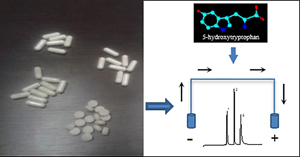
Schematic illustration of the analytical approach for determination of 5-hydroxytryptophan (5 HTP) in dietary supplements.
https://dx.doi.org/10.5935/0103-5053.20140029
J. Braz. Chem. Soc. 2014, 25(4), 788-794
Rodriguesic Acids, Modified Diketopiperazines from the Gastropod Mollusc Pleurobranchus areolatus
Fabio R. Pereira; Mario F. C. Santos; David E. Williams; Raymond J. Andersen; Vinicius Padula; Antonio G. Ferreira; Roberto G. S. Berlinck
How to cite this article
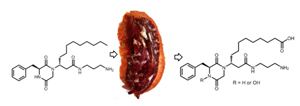
Rodriguesic acid and rodriguesic acid hydroxamate are the first diketopiperazines isolated from a marine mollusc. A carboxylic acid replacing the terminal methyl group of an alkyl chain constitutes an unusual structural feature of both rodriguesic acids.
https://dx.doi.org/10.5935/0103-5053.20140037
Additions and Corrections J. Braz. Chem. Soc. 2014, 25(4), 795
Refining of Buriti Oil (Mauritia flexuosa) Originated from the Brazilian Cerrado: Physicochemical, Thermal-Oxidative and Nutritional Implications
Jailane de Souza Aquino; Débora C. N. de Pontes Pessoa; Kassandra de Lourdes G. V. Araújo; Poliana S. Epaminondas; Alexandre Ricardo P. Schuler; Antônio G. de Souza; Tânia Lúcia M. Stamford
How to cite this article
https://dx.doi.org/10.5935/0103-5053.20140054
Online version ISSN 1678-4790 Printed version ISSN 0103-5053
Journal of the Brazilian Chemical Society
JBCS Editorial and Publishing Office
University of Campinas - UNICAMP
13083-970 Campinas-SP, Brazil
Free access











